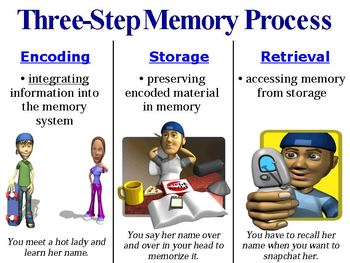
People often get caught up in thinking there’s a “one size fits all” learning style for memorizing new material. The important thing is to learn it the way that works for you. Some people are better at storing memory visually (pictures) while others more acoustically (sound). If we can learn how to better encode information, we would be able to overall improve our memory storage. This can be done with visualization or guided imagery techniques. The best way to improve our encoding process is to link, associate or connect the incoming information with something already in our memory in order to make it meaningful. Instead it is primarily related to the encoding process. Many people perceive that lack of memory is related to lack of intelligence.

It is important to understand that memory is broken down into three stages of information processing encoding, storage and retrieval. Encoding is the process of acquiring information and transferring it into memory (Goldstein 2011). This information is encoded in many different forms, such as images, sounds or meaning.


Memory requires processing lots of information. Without memory we would not be able to learn. We would not be able to recall what we did yesterday, what we have done today or what we intend to do tomorrow. Without memory of the past we cannot function in the present or even begin to think about the future.


 0 kommentar(er)
0 kommentar(er)
